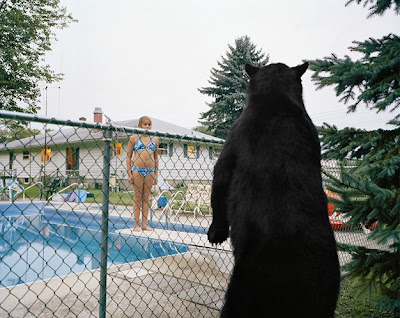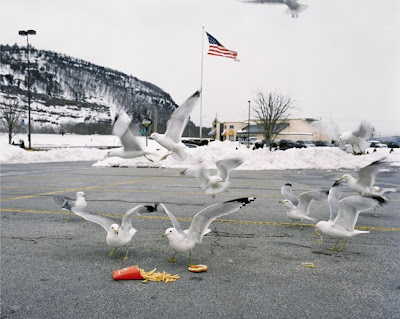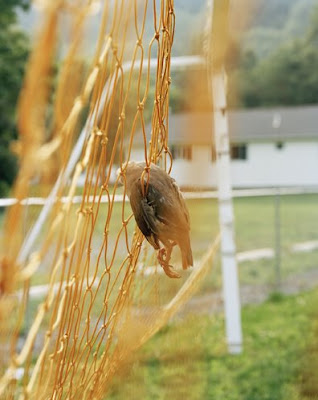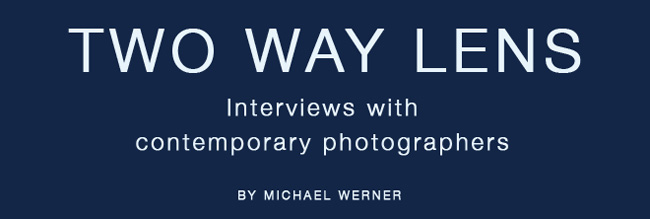What inspired you to start taking photographs, and what is the primary inspiration for you to keep working in this field?
AS
I was late to photography. I didn't pick up a camera and get serious until after my 32nd birthday. In 1999, I quit my job at Policy.com and decided on a whim to bum around China, Vietnam, Thailand and Nepal for six months. When I came back to D.C. I wasn't anxious to be reintroduced back into the cubicle wild, but I moved to New York, reluctantly got a dotcom job and muddled along in the work-a-day for another year and a half. The seeds of my dissatisfaction had already been sewn on my Asia trip and one day while I was sitting on my couch it came to me in a flash. I was going to be a photographer.
I am not your typical artist that spent her youth drawing and painting and generally being creative, but I always had the itch to make art. In that moment, I knew that photography was what I wanted to do. The only camera I had was my mom's old Nikon and my only experience taking pictures was an elective course I took in undergrad ten years earlier.
I had no clue what I doing, but decided to publicly declare my photographic intentions to friends and family as insurance against backing out.
I went to the ICP and started taking classes in photojournalism and documentary photography. I had ambitions of a National Geographic lifestyle, traveling to exotic locales and taking photos of baby monks and Whirling Dervishes. My transition from photojournalist to fine art photographer took place gradually, but was marked by two import events in 2002. That summer I assisted Jo Ann Walters in Maine and she opened my eyes to the possibilities of artistic expression though photography. That same year I saw Gregory Crewdson's "Twilight"
exhibition at Luhring Augustine and was blown away. My understanding of photography's potential expanded exponentially and I decided to go to grad school and work towards my MFA.
Today I find inspiration in everything. It could be a song, a painting or a parking lot in Queens. I feel very confident as an artist and want to explore everything. I am not interested in being pigeonholed by concept, format, subject or process. I will go wherever my curiosity and inspiration takes me. In some ways my photographic journey is like a bird building a nest. There are bits and strings and twigs everywhere and they all have stories. Through photography I collect and present these disparate pieces and gradually form them into a cohesive vision over my career.
MW
In your opinion and experience, how can emerging photographers evaluate themselves as ready to start promoting their works and seek broader exposure for their photographs? What is one vital action you would recommend photographers undertake to find their audience, be included in exhibitions, and gain professional representation?
AS
I think it is important to make the distinction between beginning photographers and emerging photographers. Emerging photographers have already created an impressive body of work and received some level of recognition. Too many beginners consider themselves emerging and try to jump ahead before they are ready.
Beginning photographers should just produce work and learn. They should go to every photography exhibit on the calendar and read every photography book they can get their hands on. They should look at the work of people that inspire them and explore the many levels of thought the artist brought to each photograph. They should be extremely honest with themselves about where they are in their career and brutally honest with themselves about their photographs. Put in the time and don't show the work until you have a lot more than just a couple of good photographs.
Over the past few years the opportunities for emerging photographers to gain exposure have increased significantly. Portfolio reviews and contests have become big business. Some are sketchy, but the good ones like Review Santa Fe and Photolucida are still one of the best ways to get your work in front of the right people. Before you enter, do your homework and make sure the reviewers, judges or past winners are a good fit for your work.
Beyond the portfolio reviews, the single greatest action an emerging photographer can take is finding a community of your contemporaries. I have found a strong community with Brian Ulrich, Jonathan Gitelson, Juliana Beasley, Shen Wei, Ofer Wolberger, Corey Arnold, and Bill Sullivan and I think we all have benefited from our connection. It's important to find a community that supports each other through admonition, tough love and using every opportunity they can to promote the work of their fellow artists. Photography is a struggle, but it is not a competition. If you are interviewed, mention another photographer. If you are meeting with a gallery director, tell them about so-and-so's work. It's what you do because you believe in good work and because you believe a rising tide raises all boats.
Also, once you have reached a certain level in your career, it's important to use that pulpit to help talented photographers who are just starting down the long road. At least twice a week I make time to meet or email with a young photographer and review their work. I also use my blog to bring attention to artists I feel deserve a wider audience. The art world can be a cold, crazy business. It's important to make it as real and as sane as you can.
MW
How did it come about that you achieved the status of successful, professional photographer? What steps were involved in reaching your level of success?
AS
With apologies to Bill Clinton, it depends on what your definition of success is. I consider myself successful because I know the work I want to make and I have the drive that propels me forward until it's done and I am happy. That people respond favorably to the work and purchase it is icing on the cake.
Deciding to go to grad school and get my MFA was the most important step I took in my progression as an artist. Grad school provided me a community and discipline that I would not have been able to generate on my own. My two years at the SVA was like being a photographic ascetic. It forced me to make work every week and allowed me a
feedback system of fellow photographers that helped push my projects and my vision.
After grad school there were a couple of key events that moved my career forward. I was accepted to Review Santa Fe While where I met some amazing folks like Brian Clamp who have become great friends and strong advocates for my work. I won the Saatchi/Guardian competition and was included in a show in London. I entered the Critical Mass competition and was a winner.
I've had some successes, but I have had far more setbacks. The cruelest words for an artist are, "we had many strong applicants this year, unfortunately..." I have read those words far too many times. To motivate me, I keep a box of my rejection letters close by.
There is no sure path to success in the art world and the only variable you control is the work. It's vital that you believe in what you are doing and that you continue to passionately make work no matter what. After that, set very specific and realistic short and long term career goals for yourself and be like water running downhill in pursuit of them.
 Amy Stein, Watering Hole, from the series Domesticated
Amy Stein, Watering Hole, from the series Domesticated Amy Stein, Backyard, from the series Domesticated
Amy Stein, Backyard, from the series Domesticated Amy Stein, Fast Food, from the series Domesticated
Amy Stein, Fast Food, from the series Domesticated Amy Stein, Nursery, from the series Domesticated
Amy Stein, Nursery, from the series Domesticated Amy Stein, Net, from the series Domesticated
Amy Stein, Net, from the series Domesticated Amy Stein, from the series Stranded
Amy Stein, from the series Stranded Amy Stein, from the series Stranded
Amy Stein, from the series Stranded Amy Stein, from the series Stranded
Amy Stein, from the series Stranded© all images Amy Stein
